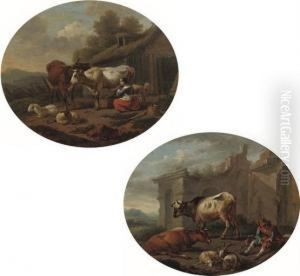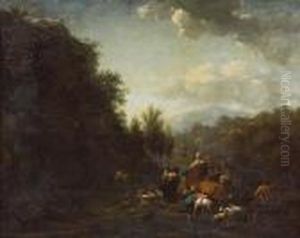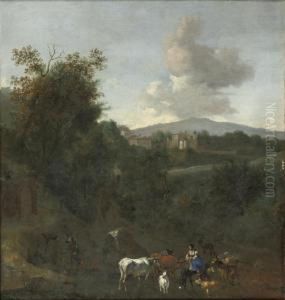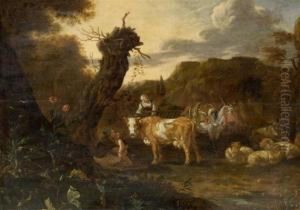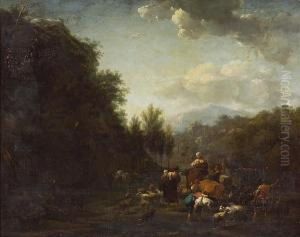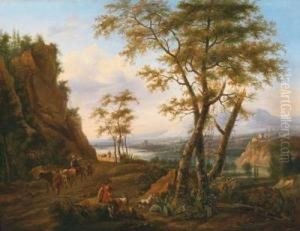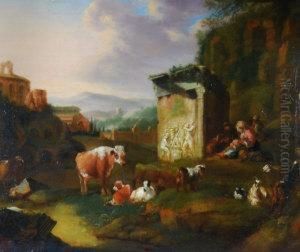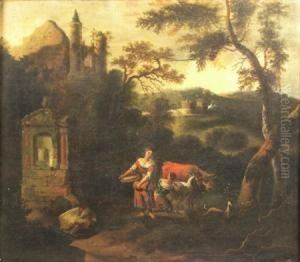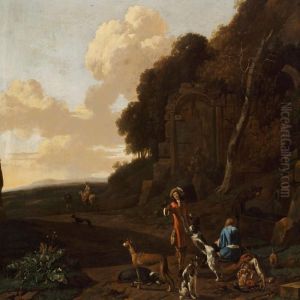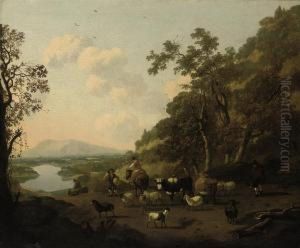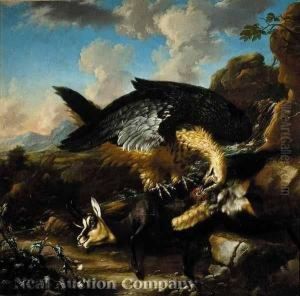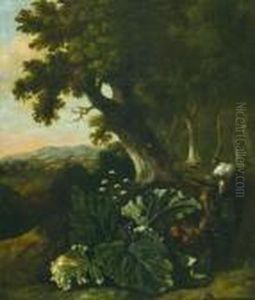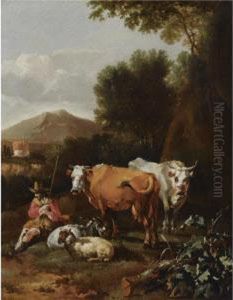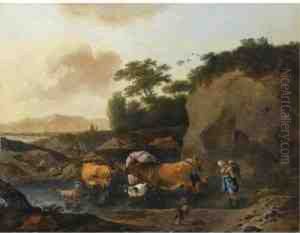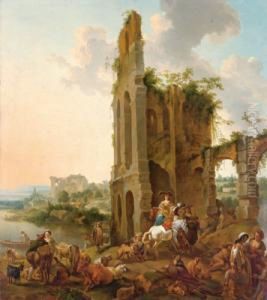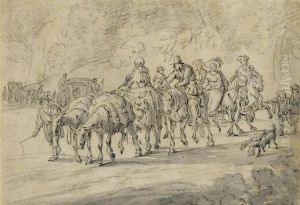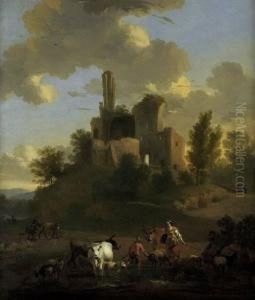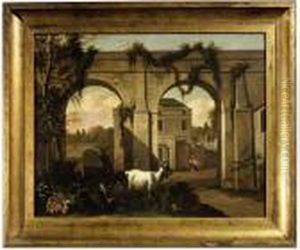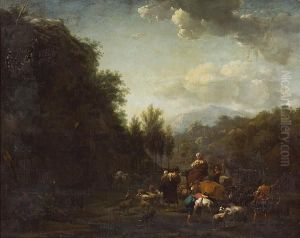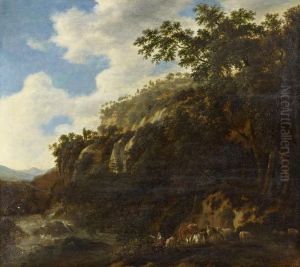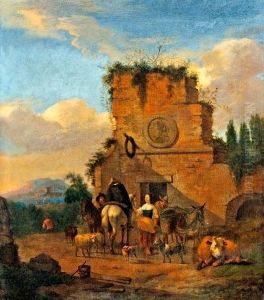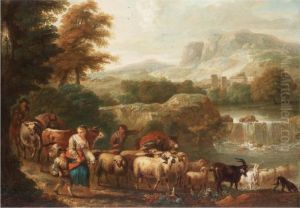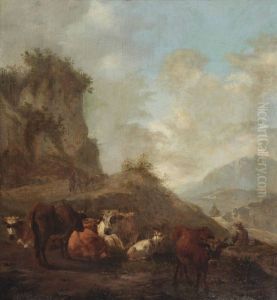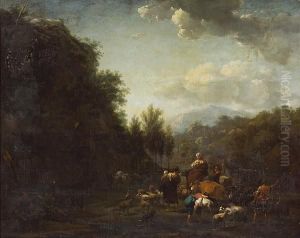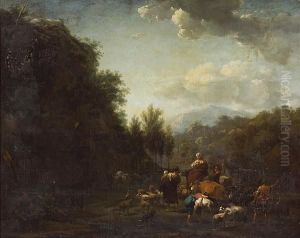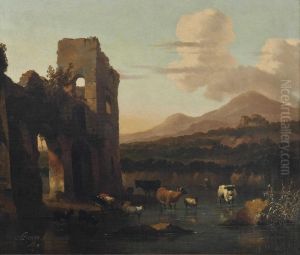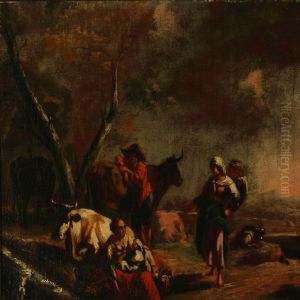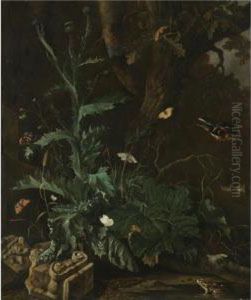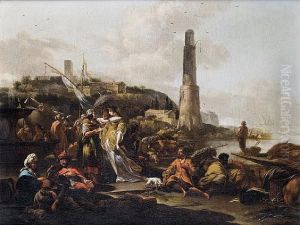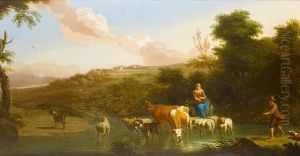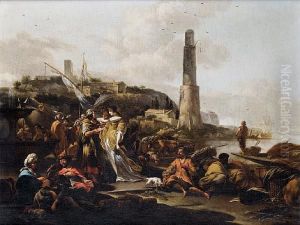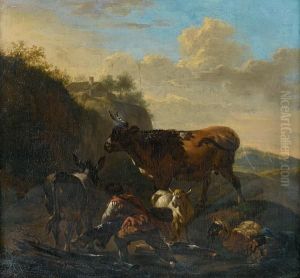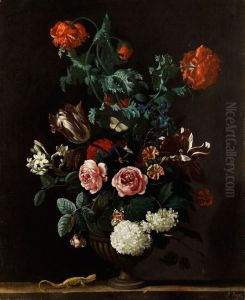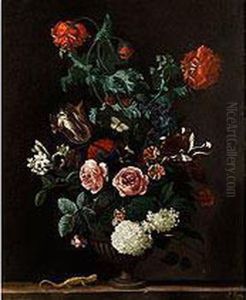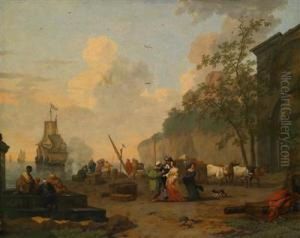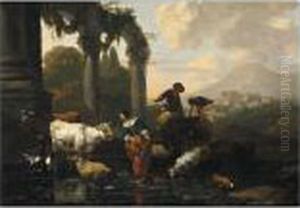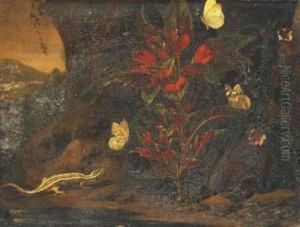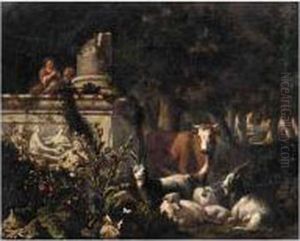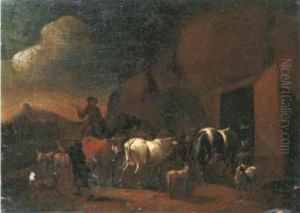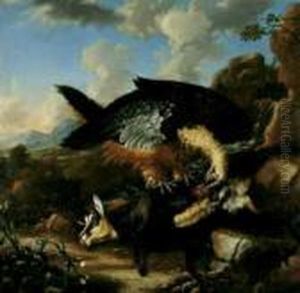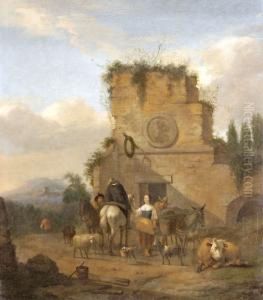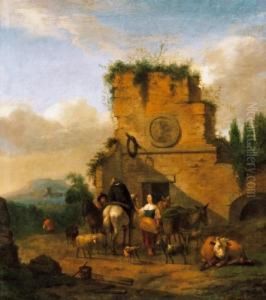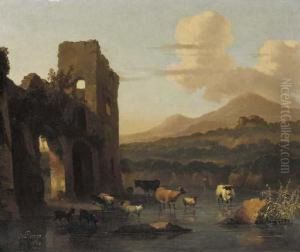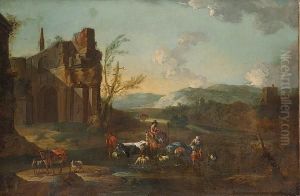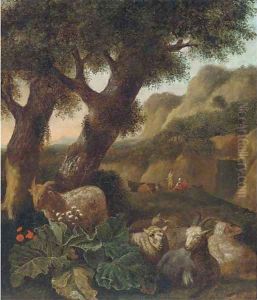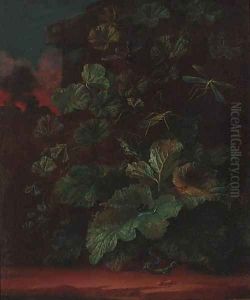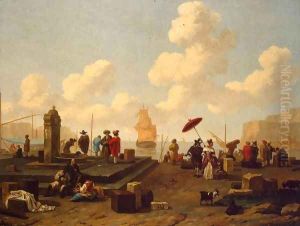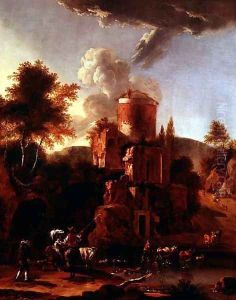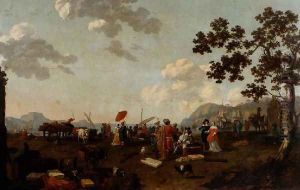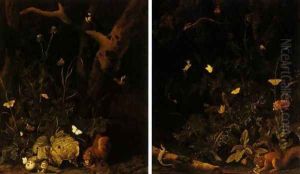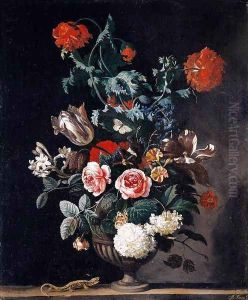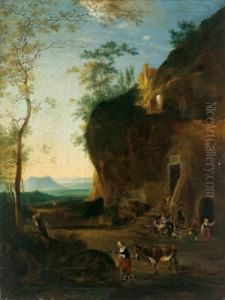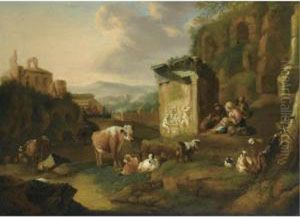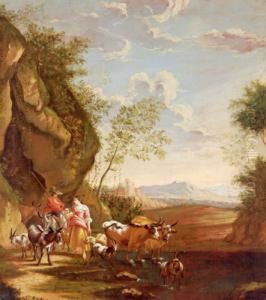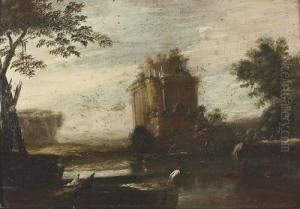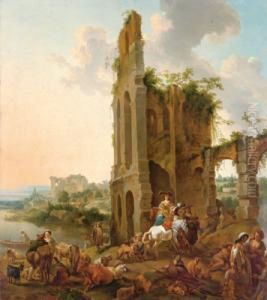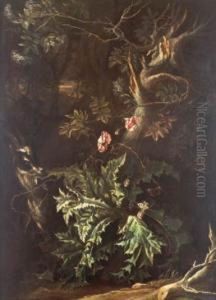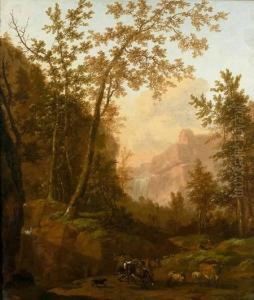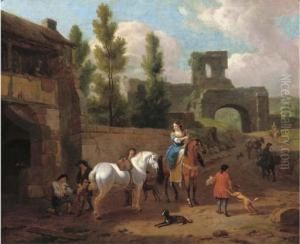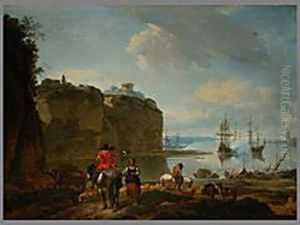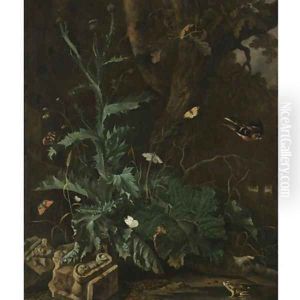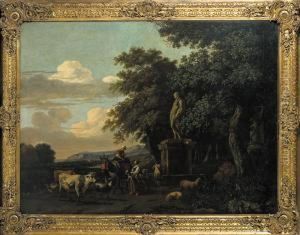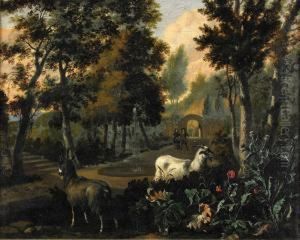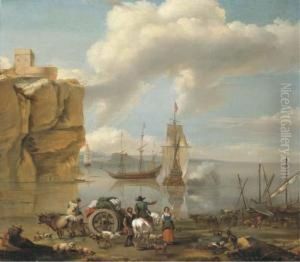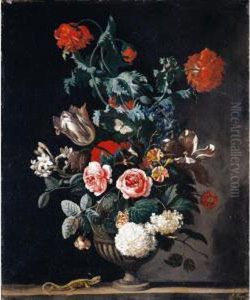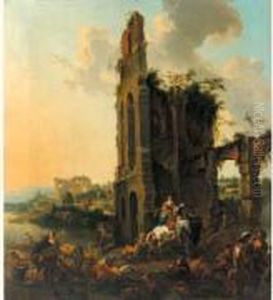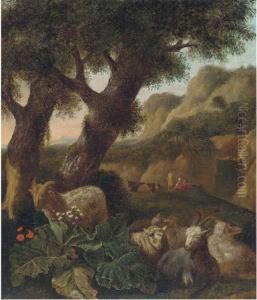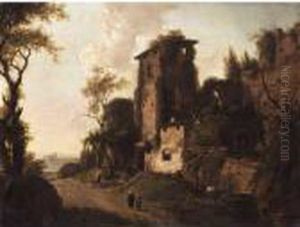Abraham Jansz Begeyn Paintings
Abraham Jansz Begeyn, also known as Abraham Jansz van Beijeren, was a Dutch artist born in the year 1637 in Leiden, Netherlands. He is primarily known for his work as a painter in the Dutch Golden Age, a period in Dutch history during the 17th century in which Dutch trade, science, and art were among the most acclaimed in the world.
Begeyn began his artistic career at a young age and became a member of the Leiden Guild of St. Luke in 1655. This guild was a professional association for painters, and membership was a common step for artists aspiring to establish their careers. Begeyn's early works were influenced by the Leiden school of painting, which was known for its fine painting and attention to detail.
Throughout his career, Begeyn was recognized for his versatility in painting different subjects. He painted landscapes, still lifes, and animal scenes, often integrating these elements into coherent compositions. His landscapes typically included Italian or Mediterranean scenes, reflecting the Grand Tour's influence, a traditional trip around Europe undertaken by mainly upper-class European young men of the time, which often included Italy as a key destination.
Begeyn's work was appreciated for its realistic portrayal of nature and its serene quality. His landscapes often depicted pastoral scenes with animals and shepherds, and his still life paintings showed a keen observation of detail and texture, which was characteristic of Dutch Golden Age painting.
In 1672, Begeyn moved to Berlin, where he was employed by Frederick William, Elector of Brandenburg. There, he became part of the group of artists working at the court. His stay in Berlin marked a significant period in his career where he received recognition and patronage from one of the most important courts in Europe at the time.
Begeyn died in Berlin in 1697. His works continued to be appreciated after his death and are part of collections in various museums around the world. His contribution to the Dutch Golden Age of painting remains significant, and his art provides a window into the era's cultural and artistic heritage.
